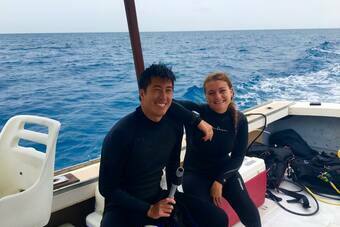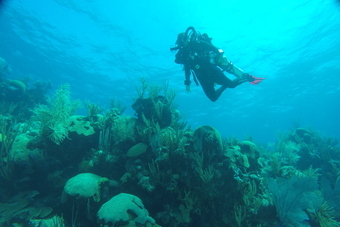Publications:
Goodbody-Gringley et al. 2018
Early life history traits of brooding corals are often affected by the environmental conditions experienced by parental colonies. Such parental effects can impact offspring survival, which influences the overall success of a population as well as resilience to environmental challenges. This study examines the reproductive ecology and early life history traits of the brooding coral Porites astreoides across a depth gradient in Bermuda. Fecundity, larval size, larval Symbiodinium density, and settlement success, as well as post-metamorphic juvenile survival, growth, and Symbiodinium density were compared across three reef sites representing an inshore patch reef (2–5 m), an offshore rim reef (8–10 m), and an upper-mesophotic reef (30–33 m). Although fecundity did not differ across sites, larvae produced by colonies on the patch reef site were smaller, had lower Symbiodinium densities, and had lower rates of settlement and juvenile survival compared to larvae from colonies on the rim and upper-mesophotic reef sites. Larvae produced by colonies from the rim and uppermesophotic sites did not differ in size or Symbiodinium densities; however, rates of settlement, growth, and survival were higher for larvae from the upper-mesophotic site compared to those from the rim reef site. These results indicate that offspring quality and success vary among sites with differing environmental conditions and may imply higher recruitment potential and resilience for upper-mesophotic corals.
2- 33 m
Mesophotic “mentions”
81 x (total of 6484 words)
Classification
* Presents original data
* Focused on 'mesophotic' depth range
* Focused on 'mesophotic coral ecosystem'
Fields
Ecology
Reproduction
Focusgroups
Scleractinia (Hard Corals)
Locations
Bermuda
Platforms
SCUBA (open-circuit or unspecified)




